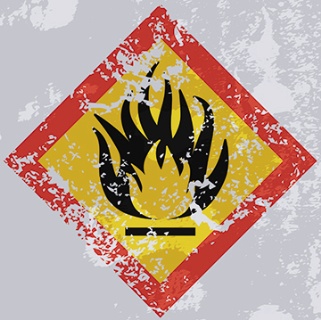You are viewing 1 of your 1 free articles
Timber concern
Two recent fires have raised new questions about timber frame development, says Sam Webb

When the production of high-quality leather ceased on the centuries-old tannery site in the cathedral city of Canterbury, it became the site of the largest housing development inside the city walls since World War II.
On 3 July 2015, a four-storey timber-framed block became Canterbury’s largest housing fire since the Baedeker raid of 1942.
The fire, which broke out on the top floor, spread sideways through the roof spaces, then down through the cavities in the external walls, destroying 16 homes and leaving 14 damaged.
The speed of the fire took everyone by surprise. Concerned residents, who had come out to find out what was happening, were advised to go back and collect valuables and pets, only to then find firemen hammering on their doors and telling them to leave immediately. The fire was out of control.
This prompted Julian Brazier, the local MP, to suggest ‘that the design of the flats and houses escalated the spread of the blaze on the city’s Old Tannery Estate’.
Of course everyone thinks that if modern timber frame construction follows the building regulations and fire codes, and if all the fire stops are fitted, then everything will be fine. But that is not proving to be the case.
Three weeks before, in June 2015, there was another equally devastating fire in a luxury Wharfside timber frame development in Wigan. Half the flats in a 120 flat block were destroyed.
Until 1991 and a change in the building regulations, multi-storey timber frame construction had been banned in England & Wales since the Great Fire of 1666. In 1999, a 6 storey block of timber frame flats was built for fire testing by the Building Research Establishment (BRE) in the old airship hanger at Cardington (for a project with various partners, including the government). The test ticked the boxes. After testing for hot spots, the fire brigade left the site.
What is rarely mentioned was what happened eight hours later, at 12.30am. Fire which had been burning unseen inside a cavity damaged the top half of the building.
As Mr Brazier says, ‘My concern is that, at a time when building regulations are more prescriptive than ever on issues like energy saving, the basic requirement to make the building resilient to fire appears to have been lost sight of.’
That is precisely what the Chief Fire Officers Association and All-Party Parliamentary Fire Safety & Rescue Group have been saying for years - they want sprinklers fitted in timber frame flats.
Sam Webb, member of the All-Party Parliamentary Fire Safety & Rescue Group







